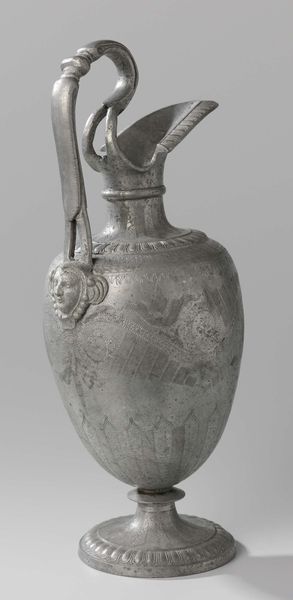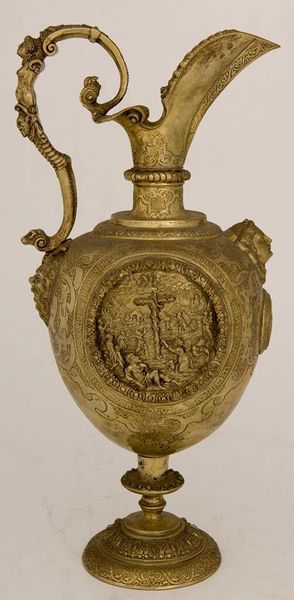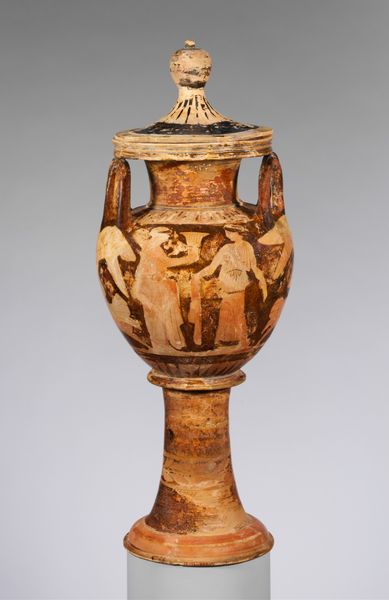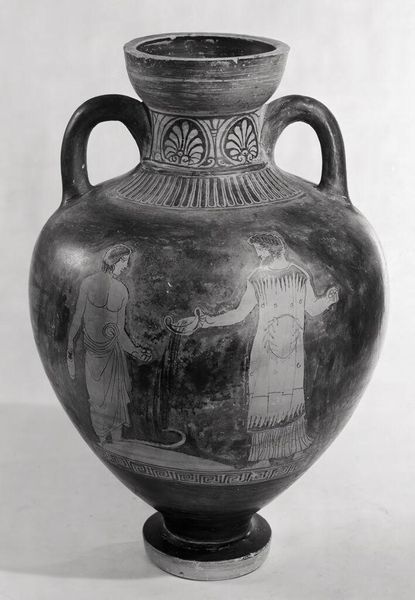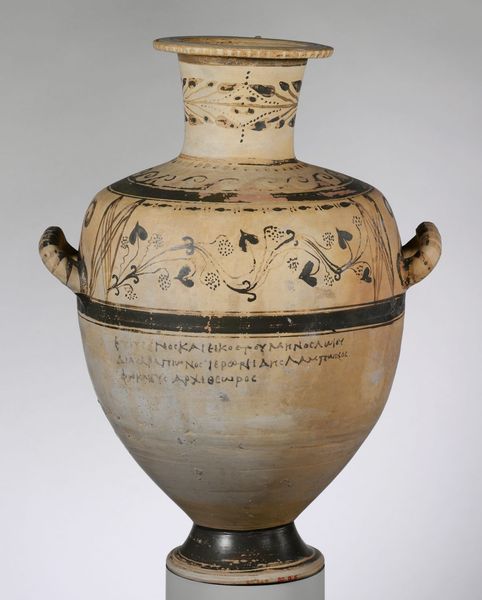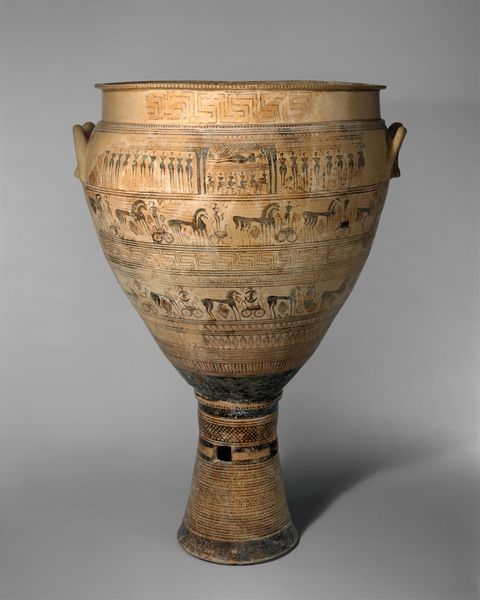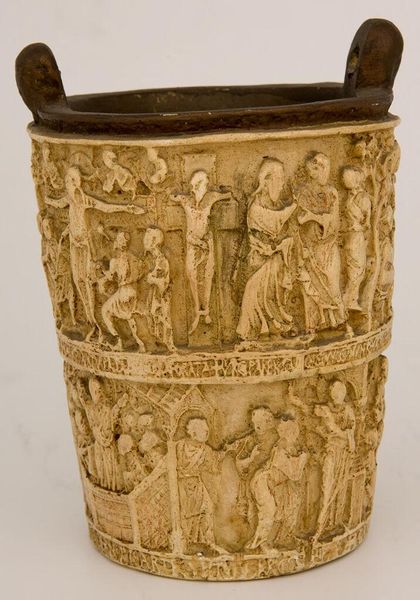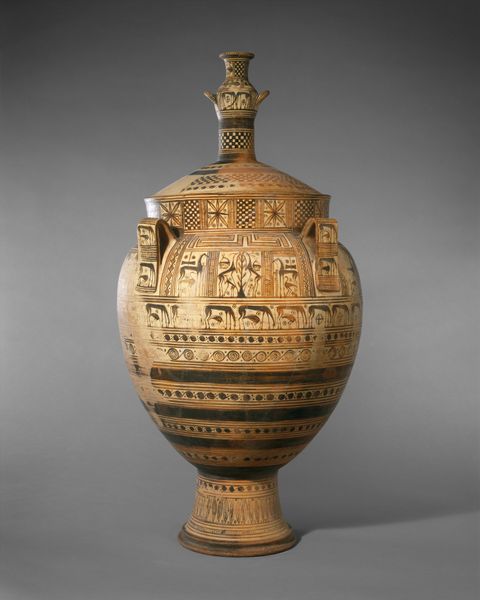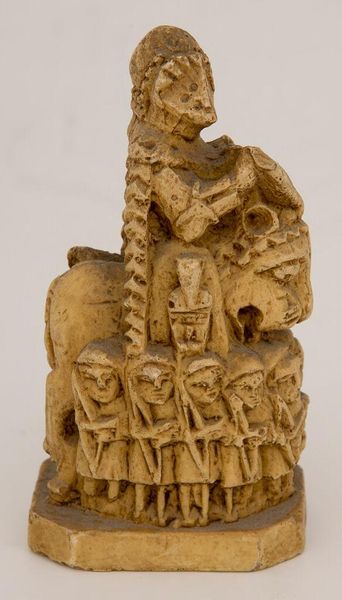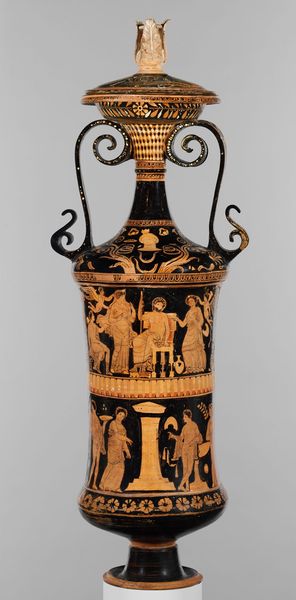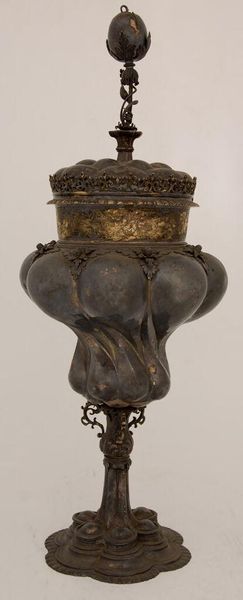
Dimensions: sight: 27.9 cm (11 in.)
Copyright: CC0 1.0
Editor: Here we have a 16th-century goblet, a "Facsimile of Liberal Arts Goblet," artist unknown. The bronze or brass is so ornate; it's amazing. What can you tell us about how it was made? Curator: Look closely at the casting and chasing. It speaks volumes about skilled labor and workshop practices of the era. This wasn't just art; it was a product of specific social and economic forces. Who would have commissioned such a piece, and why? Editor: Someone wealthy, surely, to display their status and knowledge? Curator: Precisely. The material itself – the bronze, the labor – reveals the relationship between art, consumption, and power in Renaissance society. It's less about individual genius, more about a system. Editor: So, seeing the piece this way makes you consider its social implications more than the skill it took to make? Curator: Both are integral, but understanding the means of production deepens our appreciation of its historical context and what it represented. Editor: That’s a different lens than I usually use, I appreciate it. Curator: Glad to offer a new perspective. It encourages us to question the very definition of ‘art.’
Comments
No comments
Be the first to comment and join the conversation on the ultimate creative platform.
